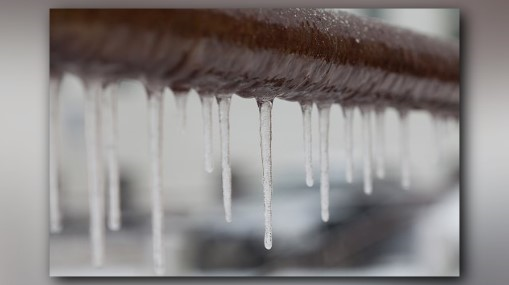Essential Strategies for Avoiding Frozen Plumbing in Cold Weather
Essential Strategies for Avoiding Frozen Plumbing in Cold Weather
Blog Article
The article down the page in relation to Helpful Tips to Prevent Frozen Pipes this Winter is highly fascinating. Read it for yourself and decide what you think of it.

Cold weather can wreak havoc on your plumbing, particularly by freezing pipelines. Here's exactly how to prevent it from occurring and what to do if it does.
Introduction
As temperatures decrease, the risk of frozen pipes boosts, possibly leading to pricey repairs and water damage. Recognizing how to avoid frozen pipelines is crucial for house owners in cool environments.
Recognizing Frozen Pipes
What triggers pipes to freeze?
Pipelines ice up when exposed to temperature levels below 32 ° F (0 ° C) for expanded durations. As water inside the pipelines freezes, it broadens, taxing the pipe wall surfaces and possibly creating them to rupture.
Threats and problems
Frozen pipes can cause water interruptions, property damages, and costly repairs. Burst pipelines can flooding homes and cause extensive architectural damage.
Indicators of Frozen Water Lines
Identifying icy pipelines early can avoid them from bursting.
Just how to recognize icy pipelines
Search for decreased water flow from taps, uncommon smells or noises from pipelines, and visible frost on exposed pipes.
Avoidance Tips
Shielding at risk pipes
Cover pipelines in insulation sleeves or make use of heat tape to secure them from freezing temperature levels. Concentrate on pipelines in unheated or external locations of the home.
Home heating strategies
Maintain interior spaces sufficiently warmed, particularly locations with pipes. Open up cupboard doors to enable cozy air to flow around pipes under sinks.
Safeguarding Exterior Pipes
Garden hose pipes and exterior faucets
Detach and drain garden pipes prior to winter season. Set up frost-proof faucets or cover exterior taps with shielded caps.
What to Do If Your Pipes Freeze
Immediate actions to take
If you presume frozen pipelines, keep faucets available to soothe pressure as the ice thaws. Make use of a hairdryer or towels taken in hot water to thaw pipelines gradually.
Long-Term Solutions
Architectural changes
Take into consideration rerouting pipelines away from outside wall surfaces or unheated locations. Add extra insulation to attics, basements, and crawl spaces.
Updating insulation
Buy high-grade insulation for pipes, attic rooms, and walls. Proper insulation assists maintain constant temperatures and minimizes the danger of icy pipes.
Final thought
Preventing frozen pipelines needs positive procedures and quick actions. By comprehending the reasons, indicators, and safety nets, house owners can secure their plumbing throughout cold weather.
5 Ways to Prevent Frozen Pipes
Drain Outdoor Faucets and Disconnect Hoses
First, close the shut-off valve that controls the flow of water in the pipe to your outdoor faucet. Then, head outside to disconnect and drain your hose and open the outdoor faucet to allow the water to completely drain out of the line. Turn off the faucet when done. Finally, head back to the shut-off valve and drain the remaining water inside the pipe into a bucket or container. Additionally, if you have a home irrigation system, you should consider hiring an expert to clear the system of water each year.
Insulate Pipes
One of the best and most cost-effective methods for preventing frozen water pipes is to wrap your pipes with insulation. This is especially important for areas in your home that aren’t exposed to heat, such as an attic. We suggest using foam sleeves, which can typically be found at your local hardware store.
Keep Heat Running at 65
Your pipes are located inside your walls, and the temperature there is much colder than the rest of the house. To prevent your pipes from freezing, The Insurance Information Institute suggests that you keep your home heated to at least 65 degrees, even when traveling. You may want to invest in smart devices that can keep an eye on the temperature in your home while you’re away.
Leave Water Dripping
Moving water — even a small trickle — can prevent ice from forming inside your pipes. When freezing temps are imminent, start a drip of water from all faucets that serve exposed pipes. Leaving a few faucets running will also help relieve pressure inside the pipes and help prevent a rupture if the water inside freezes.
Open Cupboard Doors
Warm your kitchen and bathroom pipes by opening cupboards and vanities. You should also leave your interior doors ajar to help warm air circulate evenly throughout your home.

We hope you liked our article about How To Avoid Freezing Pipes. Thank you so much for taking a few minutes to browse our piece of content. I beg you take the opportunity to promote this blog if you enjoyed it. I appreciate reading our article about How to prepare your home plumbing for winter weather.
Call Today Report this page